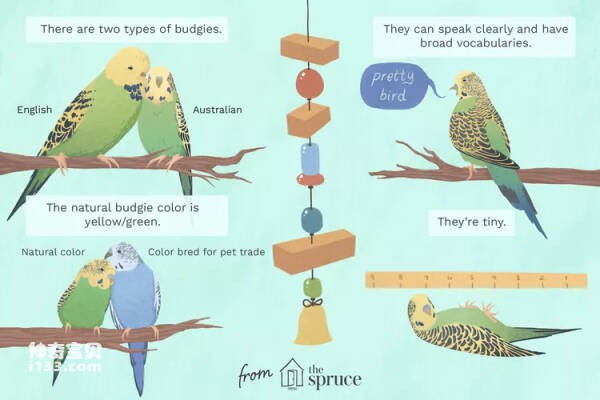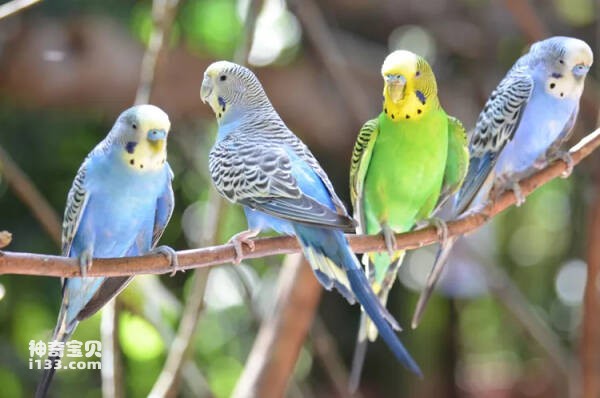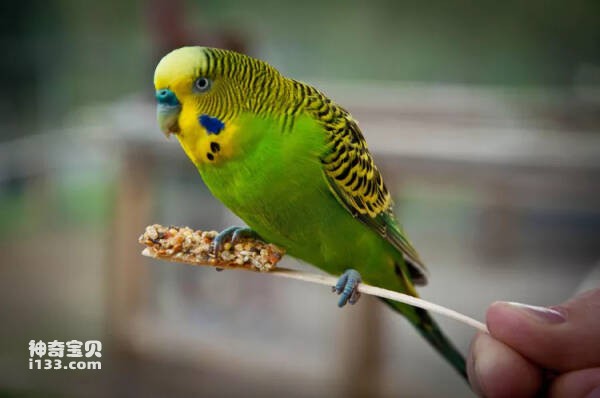It's no wonder that baby budgies are one of the most popular pets in the world, ranking second only to dogs and cats. These affectionate and adorable birds are small and inexpensive, and if trained properly, budgies can imitate human speech. The origin of its official name, "budgie," is a mystery, but no matter what its name, this little bird is a charming companion for most pet owners.

But it's not all fun and games with budgies, so before you bring one home, make sure you don't encounter any surprises. Here are some important things to know about budgies.
01. All budgies are parrots, but not all parrots are budgies

Close-up of budgerigar perched on a branch
Some people call budgies by their full name (budgie), while others call them parakeets. Although budgies are parakeets, there are many different types of parakeets and come in a variety of colors, shapes, and sizes. Some parakeets, such as the Indian ring-necked parakeet, are very large, measuring up to 16 inches from head to tail, while budgies are much smaller. Because of the huge differences in size, etc., it is more accurate to call these birds by their true names.
02. They are one of the smallest true parrot species

Budgerigars at Franklin Park Zoo
They are not the smallest parrots - that distinction belongs to small parrots - but budgies are small. The average length of most captive budgies from beak to tip of tail is between 7 or 8 inches. Wild budgies in their native Australian habitat are even smaller.
03. There are two different types

Budgerigar on the branch
Not many people realize that there are actually two different types of budgies - the traditional budgies from Australia, and those bred specifically in the UK for the show and pet trade The larger British budgie. Although both are clearly budgies, there are differences when viewing them side by side. English budgies are typically 1 to 2 inches longer than Australian budgies, with larger heads and fluffier feathers around the face and head.
04. Budgies can learn to speak better than some larger parrots

Budgerigar in perch
There is no way to guarantee that your budgie, or any other parrot, will learn to "talk." However, budgies do have a knack for this, and many times they speak more clearly and with a wider vocabulary than larger parrots such as macaws and cockatoos.
Although budgies have small and raspy voices, they have an impressive ability to accept human words and phrases and sometimes even use them in the appropriate context. They are a good choice for those who are new to bird keeping and want to own a talking parrot.
05. Green is the only natural color of budgies

Gray budgies and green budgies separated
While people are often used to seeing budgies of various colors for sale in pet stores, the only natural colors found in wild budgies are the yellow/green varieties. All other budgies, including blue budgies, white budgies, etc., are color-mutated budgies bred specifically for the pet trade. There's nothing wrong with these birds, but don't expect to see a blue budgie in the wild.
06. Try a diverse diet

Close-up of budgerigar eating fruit
Due to their small size, budgies are relatively cheap to care for and feed. But contrary to popular belief, a diet consisting solely of seeds is not good for small birds like budgies and may even cause health problems. Instead, veterinarians recommend that your budgie's diet include pellets and fresh fruits and vegetables, including leafy greens. Budgerigars can be fed small amounts of seeds as part of their diet, as long as their diet is based on pellets, vegetables and a small amount of fruit.
FAQ
How old is my budgie?
There are several ways to determine the age of your budgie:
Look at the stripes on its head: if they extend up to its beak, it's three to four months old.
Look at the color of its beak: A dark (such as black) beak indicates that your budgie is less than 12 weeks old.
Next, take a look at your bird's eyes: Dark eyes with no visible irises indicate the bird is less than five months old. If your budgie has a white iris ring, it is at least eight months old.
What is the difference between a budgie and a parakeet?
All budgies are parakeets, but not all parakeets are budgies. The most popular parakeet is the budgerigar, nicknamed the budgerigar. Budgerigars are the most common parakeet and are native to Australia.
How to help a budgie that is molting?
If your budgie is molting, it will be itchy. Give your child a shallow dish of water to use to bathe himself. You can also spray it with a plant sprayer.
animal tags:
We created this article in conjunction with AI technology, then made sure it was fact-checked and edited by a Animals Top editor.